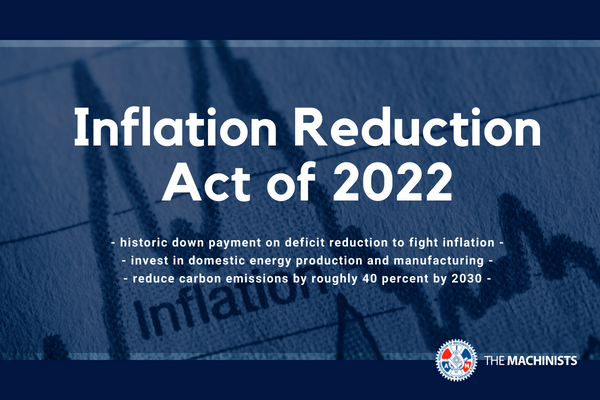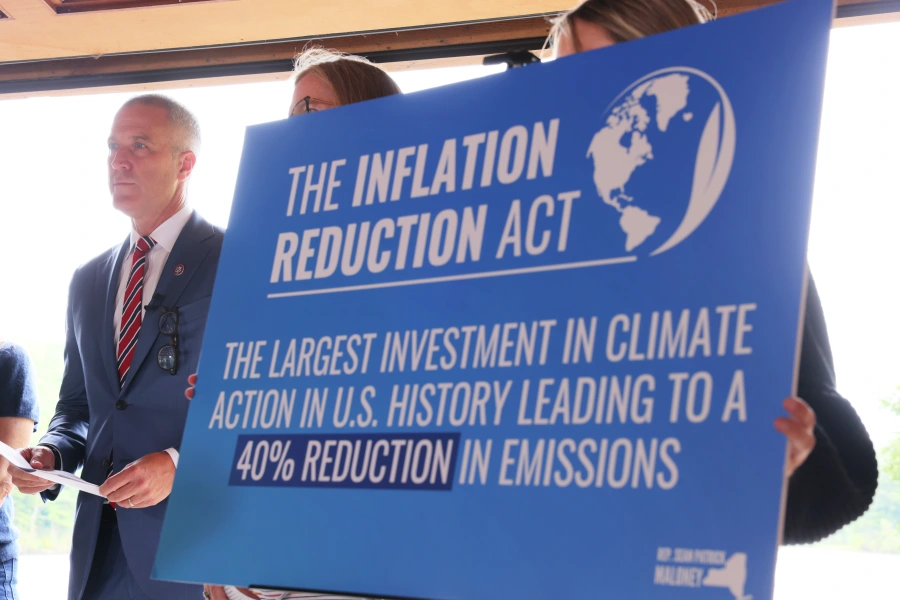On August 16, 2022, President Joe Biden signed into law the Inflation Reduction Act. This bill included ~$370 billion in tax credits, grants, loans, and other incentives to cut emissions 40% by 2030. While the guidance around these provisions will take time to come to fruition, organizations and consumers should plan to take advantage of applicable incentives.
Of the $370 billion, over $60 billion focuses on tax credits, grants, and loans related to investments in American clean energy manufacturing. $30 billion in production tax credits are allocated for the manufacturing of wind turbines, solar panels, and energy storage, as well as the processing of critical minerals. An additional $10 billion in credits are directed specifically to investments in building clean energy manufacturing facilities, including electric vehicles (EVs), wind turbines, and solar panels. $2 billion in grants will be provided to overhaul existing auto manufacturing facilities to manufacture EVs, and $20 billion in loans will be granted to build EV manufacturing facilities. Finally, $2 billion will be granted to National Laboratories to accelerate energy research, targeting areas such as battery storage and biofuels.

Regarding the reduction of carbon emissions, the bill contains an allocation of $30 billion in tax credits for states and electric utilities who source electricity and energy storage from nuclear power, hydrogen energy, biofuels, and carbon capture technology. The transportation sector will receive tax credits and grants for clean fuels and clean commercial vehicles. Further, the manufacturing industry will receive tax credits and grants to reduce emissions from industrial manufacturing processes, including ~$6 billion for new “Advanced Industrial Facilities”. $9 billion is allocated for the federal procurement of American-made clean technologies to create a stable market for clean products. This includes $3 billion for the United States Postal Service to purchase zero-emission vehicles. Lastly, $27 billion was committed to a clean energy technology accelerator program to support deployment.
The IRA also includes fossil fuel provisions. A new fee will be implemented on excess methane emissions from oil and gas drilling, which will begin in 2024 at $900 per metric ton, increasing annually. Leases originally struck down on environmental grounds for fossil fuel companies will be granted to drill on federal lands and waters. In tandem with the leases, there will be minimum royalty increases where companies will pay the government for oil and gas extracted from these areas. This includes a royalty for extracted gas that is later burnt off or released as waste rather than sold as fuel. Further, the excise tax on imported petroleum and crude oil products will increase from 9.7 cents to 16.4 cents per barrel. An estimated $11 billion revenue generation over the next ten years from this excise tax increase will be used to fund the cleanup of industrial disaster sites.

Consumer incentives include a ten-year consumer tax credit for renewable energy investments, such as rooftop solar, heat pumps, and small wind energy systems. The credit describes 30% of expenditures until 2032, phased out after ten years. Tax incentives were also expanded for energy efficiency in commercial buildings. Regarding electric vehicles, tax credits will be granted for the purchase of new and used EVs – $4,000 credit for used, $7,500 credit for new. However, the tax credit for new EVs have multiple contingencies attached, which currently cannot be met by the manufacturing sector. Finally, $9 billion was allocated for consumer home energy rebate programs to electrify home appliances, as well as energy efficient retrofits.
For a detailed analysis of the commercial tax incentives applicable to BEG clients, please click here to subscribe to our monthly Sustainability Newsletter.